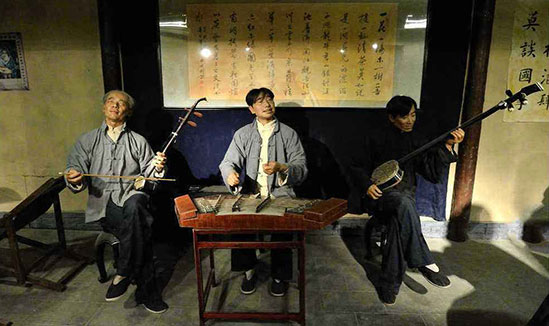

Lanzhou guzi, developed and popular in Lanzhou, Guansu Province, is a kind of folk vocal art form performed in Lanzhou dialect. It is said that it came into being in the middle and late Qing Dynasty and evolved from Songyangge songs, chiefly comprising "Dazaoge song" and "Qiediao song" popular in rural areas of Gansu Province, which have been performed without makeup since they were introduced to Lanzhou. During the late Qing Dynasty and early Republic of China, Lanzhou guzi became more fledged thanks to the introduction of Beijing one-stringed octagonal drum and Shaanxi "Mi Hu Zi" (Mei Hu). It is performed together by players separately playing the Sanxian (a three-stringed plucked instrument), dulcimer, pipa (a plucked string instrument with a fretted fingerboard), Yueqin (a four-stringed plucked instrument with a full-moon-shaped sound box), Huqin (a general term for certain two-stringed bowed instruments), Xiao (a vertical bamboo flute) and flute, sitting and singing. Once all players are on the platform, one player will hit the Xiaoyuegu (a kind of small drum) and sing standing, accompanied by the Sanxian, dulcimer, Pipa, Yueqin and Huqin. The musical structure of singing of Lanzhou guzi belongs to a set of Qupais (fixed-tuned melodies). There are more than 40 typical singing Qupais such as "Po Er Xia", "Luo Jiang Yuan" and "Bian Guan Diao".
